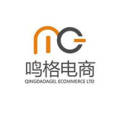How should Amazon operate?
分为两个步骤:
产品上架前的预操作。分为以下几个操作步骤:
一、市场调查。这是很重要的点,也是产品是否值得做的基本点,我们要调查产品所在市场的市场容量,价格区间,竞争激烈程度。一般来说,价格越高的产品,其实际的市场容量就越小,竞争激烈程度就越低,甚至会形成寡头或者垄断。而红海类目就不一样了,这种类目的竞争特别激烈,产品也属于低价值,那么当你打算做这种类目的时候就要深思熟虑,你手上的货源是否有足够的差异化,能够给买家提供不一样的体验,这样才能在红海类目中有竞争优势。
二、分析竞争对手。不论你是资金有限的中小卖家还是资金充足的创业者,对于你要上架的产品类目的头部买家一定要去分析,他们的listing是非常完善的,而且运营方法也是可以值得借鉴的。从他们的评论或者QA里面暴露出来的问题,一定要警惕,自己的产品是否有同样的问题,如果有,那么就想办法解决,将差评杜绝在娘胎里。学习竞争对手是最快了解同类产品的方法,尤其是类目中的领导者。
三、分析关键词。这是运营前期非常重要的工作,只有正确的关键词才能够给你带来流量以及转化,才不至于被亚马逊错误的投放。而关键词的分析,可以从竞争对手的标题、五点中找到,绝大多数的产品都只有一个或者两个核心关键词,但是可能由于语言的变化,同一个词可能会出现多个翻译,此时就要最大限度的将关键词利用起来。
四、确定运营策略。这就是运营的核心作用,确定一款产品究竟该怎么打,用什么样的方法去运营会极快的将产品做到极优。一般来说,根据不同的运营模式分为不同的策略,精品运营一般分为两种:激进式打法和温和式打法。激进式打法对资金和各种资源的需求极大,会提前准备多个账号以及充足的库存,这种打法不一定适合所有的产品,但是对于季节性产品而言,这种打法最为有效,一般40天左右的操作周期。温和式打法对时间和节奏有较高的要求,并不是说温和式打法就是靠时间累积的,如果亚马逊上能够靠时间来堆积权重,那就不会有那么多废弃的listing了,温和打法比激进打法在时间上要长但是也不会相差太大,一般贯穿整个新品期。
五、预留测评资源。做亚马逊有句话:测评找死,不测评等死。产品上架后就要第一时间安排测评,一般而言不是先开广告,而是先上评论和QA。安排直评或者找真人测评,一般一周以内能够上至少5-10个评论或者星星,在做了测评资源预留后,这是完全可以做到的。不要去担心风险,测评的时候要免评与留评同时进行,降低留评率,就能合理的规避风险,亚马逊对测评的监控一方面是从买家账号入手的,一旦检测出某个买家账号属于测评账号,那么就会对他账号下购买的所有商品的卖家发警告信;另一方面是从留评率和转化率入手的,如果订单的转化率过高,或者留评率过高,那么就会引起亚马逊的监控。
六、文案、图片及A+页面。这是基本的亚马逊产品上架要做的准备,优质的产品图片和精炼的文案,是电商不可或缺的。甚至可以在产品上架之前作出开箱视频、展示视频以及广告视频(广告视频是最近一年兴起的新的品牌广告类型,点击率和转化率的表现都十分优质)。
接下来就是产品上架后的操作:
一、测评实施。产品上架后不要急着开广告,在页面没有任何评论和QA的情况下,开广告不会带来优秀的点击和转化。
二、开启自动广告。在产品页面有评论,评分上线后,就要选择打开自动广告,增加产品的曝光,有做广告视频的可以同步的投放品牌广告。
三、开启其他广告类型。在自动广告跑出一定的词后,对广告进行优化,同时对产品增加新的广告投放,增大曝光量。
四、参加秒杀或者站外。新品上架一个月内如果能够持续不断的保持一个可观数量的订单,系统会很快的为你推荐秒杀等促销活动,这都是极为有效的增加排名的方式。站外活动也是极快增加出单,提高排名的方法,但是通过站外活动所增长的排名属于虚假排名,是没有办法稳定的,如果能够拿到BS标签则另算,如果拥有极多的站外资源,那么可以尝试下不断的做站外,以维持高的排名,对于季节性产品而言,这种方法能够带来极大的出货量,同时能够维持一个较好的排名。
对于一款产品而言,在这样一轮操作过后,如果没有成功的稳定靠前的排名,那么就需要重新定义这款产品。并且如果后期想提高这款产品的排名,那么就需要投入更多的人力与资金,以及耗费更长的时间。
Professional answer
It is divided into two steps:
Pre-operation before the product is put on the shelves. It is divided into the following steps:
1. Market research. This is a very important point, and it is also the basic point for whether the product is worth doing. We need to investigate the market capacity, price range, and degree of competition in the market where the product is located. Generally speaking, the higher the price of the product, the smaller its actual market capacity, the lower the degree of competition, and even an oligopoly or monopoly may be formed. The red ocean category is different. The competition in this category is particularly fierce, and the products are also of low value. So when you plan to do this category, you must think carefully about whether the supply you have is sufficiently differentiated and can provide buyers with a different experience, so that you can have a competitive advantage in the red ocean category.
2. Analyze competitors. Whether you are a small or medium-sized seller with limited funds or an entrepreneur with sufficient funds, you must analyze the head buyers of the product category you want to put on the shelves. Their listings are very complete, and their operation methods are also worth learning from. Be sure to be alert to the problems exposed in their comments or QA, and see if your products have the same problems. If so, find a way to solve them and prevent bad reviews from happening. Learning from competitors is the fastest way to understand similar products, especially the leaders in the category.
3. Analyze keywords. This is a very important task in the early stage of operation. Only the correct keywords can bring you traffic and conversion, so as not to be mistakenly placed by Amazon. The analysis of keywords can be found in the titles and five points of competitors. Most products have only one or two core keywords, but due to language changes, the same word may have multiple translations. At this time, it is necessary to maximize the use of keywords.
4. Determine the operation strategy. This is the core role of operation. Determine how a product should be promoted and what method to use to operate it will quickly make the product excellent. Generally speaking, different strategies are divided according to different operation modes. Boutique operations are generally divided into two types: aggressive and moderate. The aggressive approach requires a lot of funds and various resources. Multiple accounts and sufficient inventory will be prepared in advance. This approach may not be suitable for all products, but it is the most effective for seasonal products, with an operation cycle of about 40 days. The gentle approach has high requirements for time and rhythm. It does not mean that the gentle approach relies on time accumulation. If Amazon can rely on time to accumulate weight, there will not be so many abandoned listings. The gentle approach takes longer than the aggressive approach in time, but the difference is not too big. It generally runs through the entire new product period.
Five. Reserve evaluation resources. There is a saying in Amazon: evaluation is looking for death, and no evaluation is waiting for death. After the product is put on the shelf, the evaluation should be arranged as soon as possible. Generally speaking, it is not advertising first, but comments and QA first. Arrange direct evaluation or find real people to evaluate. Generally, at least 5-10 comments or stars can be posted within a week. After reserving evaluation resources, this is completely possible. Don't worry about the risk. When evaluating, you should do both review-free and review-reservation at the same time. By reducing the review-reservation rate, you can reasonably avoid the risk. Amazon's monitoring of reviews starts with the buyer's account. Once a buyer's account is detected as an evaluation account, a warning letter will be sent to the sellers of all the goods purchased under his account. On the other hand, it starts with the review-reservation rate and conversion rate. If the conversion rate of an order is too high, or the review-reservation rate is too high, it will cause Amazon's monitoring.
Sixth, copywriting, pictures and A+ pages. This is the basic preparation for Amazon product listing. High-quality product pictures and refined copywriting are indispensable for e-commerce. You can even make unboxing videos, display videos and advertising videos before the product is listed (advertising videos are a new type of brand advertising that has emerged in the past year, and the click-through rate and conversion rate are very good).
The next step is the operation after the product is listed:
1. Evaluation implementation. Don't rush to advertise after the product is listed. In the absence of any comments and QA on the page, advertising will not bring excellent clicks and conversions.
2. Turn on automatic advertising. When there are comments and ratings on the product page, you should choose to turn on automatic advertising to increase product exposure. If you have made advertising videos, you can simultaneously put brand advertising.
3. Turn on other advertising types. After the automatic advertising runs out of a certain number of words, optimize the advertisement, and at the same time add new advertising to the product to increase exposure.
4. Participate in flash sales or off-site sales. If a new product can continuously maintain a considerable number of orders within one month of its launch, the system will quickly recommend promotional activities such as flash sales to you, which are extremely effective ways to increase rankings. Off-site activities are also a way to quickly increase orders and improve rankings, but the ranking increased by off-site activities is a false ranking and there is no way to stabilize it. If you can get a BS label, it will be counted separately. If you have a lot of off-site resources, you can try to continue to do off-site sales to maintain a high ranking. For seasonal products, this method can bring a huge amount of shipments and maintain a good ranking at the same time.
For a product, if it does not successfully maintain a stable top ranking after such a round of operations, then it is necessary to redefine the product. And if you want to improve the ranking of this product later, you will need to invest more manpower and funds, and spend more time.
I can provide some suggestions for operation:
1. Optimize user experience: Amazon has always been known for its high-quality customer experience. To maintain this advantage, we must continue to optimize website functions and user interfaces to improve the convenience and comfort of the shopping process.
2. Expand product lines: Amazon should continue to expand its product lines, especially to explore new product areas to meet the needs of different customers. At the same time, we can also strengthen cooperation with suppliers to promote product diversification and cost-effectiveness.
3. Strengthen social marketing: Use new media platforms such as social media for marketing, guide users to participate in product discussions, evaluations and sharing, and increase brand and product exposure and visibility.
4. Optimize logistics and distribution: Strengthen warehousing and logistics capabilities, shorten order processing and delivery cycles, improve the quality and efficiency of express services, and increase customer trust and satisfaction with Amazon.
5. Strengthen data analysis and artificial intelligence applications: Use big data and artificial intelligence technology to conduct in-depth analysis of user behavior and consumption habits, continuously optimize product recommendations and pricing strategies, and enhance customers' purchasing experience and willingness to buy.
Similar Q&A
recommend How to view sales of several months on Amazon?
E-c News Continuously pushing e-commerce knowledge to you


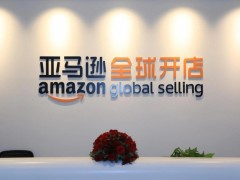
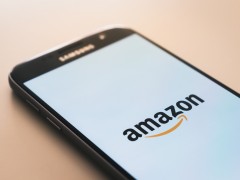
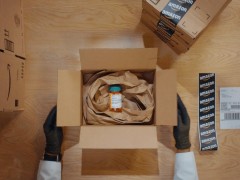

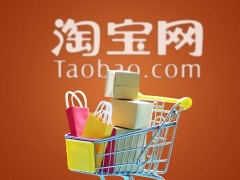

Latest Q&A More
-
Do I need a trademark to open a franchise store on Pinduoduo to sell books?
#Pinduoduo#
-
How to withdraw from a Pinduoduo store
#Pinduoduo#
-
How to withdraw from Pinduoduo merchants
#Pinduoduo#
-
How to pay fees when closing a Pinduoduo store
#Pinduoduo#
-
How to withdraw from Pinduoduo
#Pinduoduo#
-
Which store on Pinduoduo is authentic?
#Pinduoduo#
-
Which stores on Pinduoduo can buy genuine products?
#Pinduoduo#
-
How to check the store under Pinduoduo
#Pinduoduo#
-
How to receive Pinduoduo online game products
#Pinduoduo#
-
How to sell the electronic version on Pinduoduo
#Pinduoduo#
E-c News 2025-07-14 21:59:03

- African netizens use China Africa cross-border e-commerce platform for online shopping
- how is the new seller of cross-border e-commerce doing?
- how can cross-border e-commerce Amazon sell on Amazon platform without goods?
- Amazon store opening process and cost analysis!
- Amazon plans to expand its pharmacy business on a large scale and will add same day delivery service

